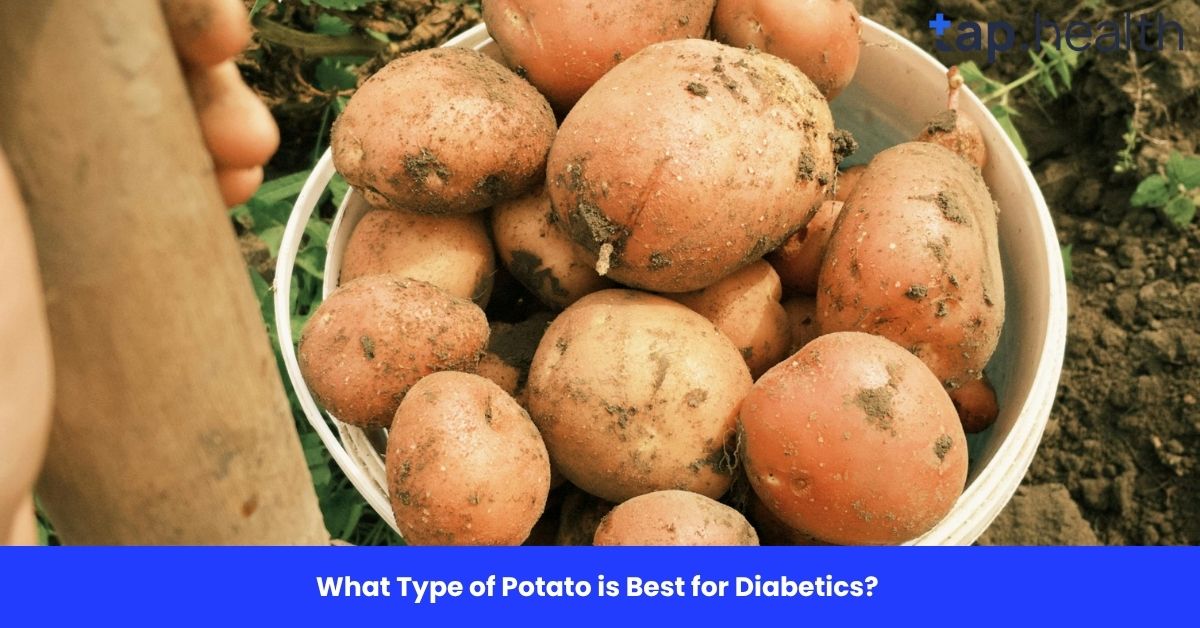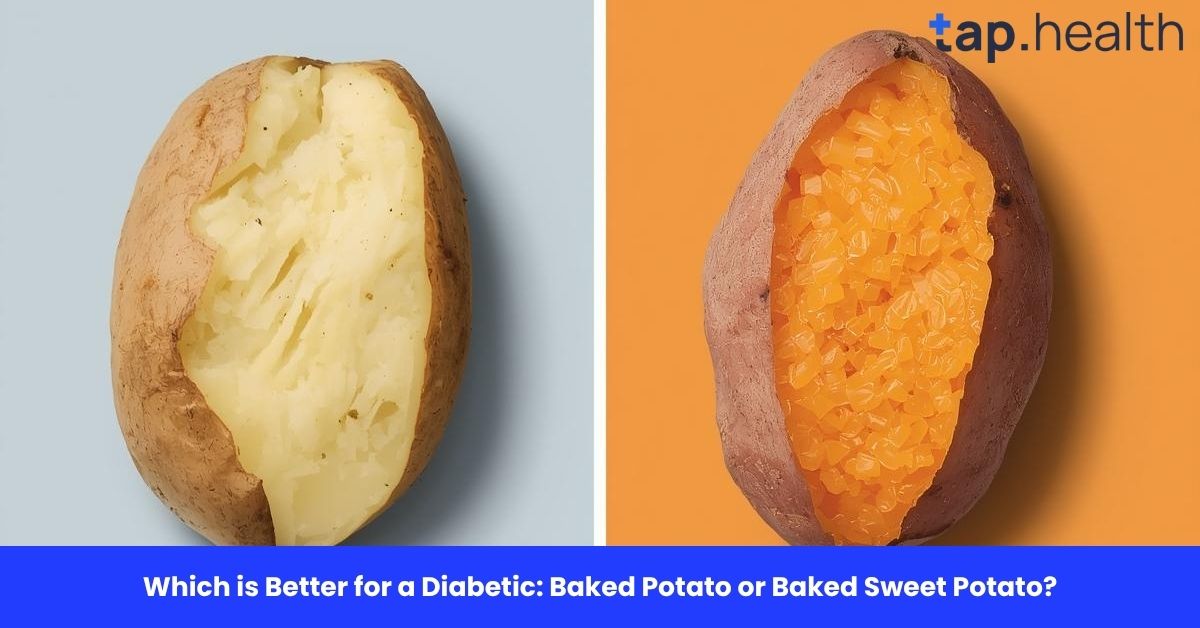Potatoes are one of the most popular and versatile foods in the world. From crispy fries to comforting mashed potatoes, they’re a staple in many households. But for individuals with diabetes, eating the wrong type of potato can lead to blood sugar spikes, making it essential to choose the right variety. If you’re diabetic or care about maintaining your blood sugar levels, you may be wondering, “What type of potato is best for diabetics?”
In this comprehensive guide, we’ll explore the best potatoes for diabetes, how to cook them for the healthiest results, and why certain varieties are better than others.
Understanding Potatoes and Diabetes
Before we dive into which potatoes are best for diabetics, let’s first understand how potatoes affect blood sugar.
Potatoes, like many starchy vegetables, are rich in carbohydrates. When you eat them, your body breaks down these carbohydrates into glucose, which raises blood sugar levels. This is especially important for people with diabetes, as their bodies have trouble managing glucose levels effectively.
The key to managing blood sugar while eating potatoes is to choose types that have a lower glycemic index (GI) and use cooking methods that don’t cause large spikes in blood sugar. The GI is a scale that measures how quickly a food raises blood sugar after being eaten. Foods with a low GI are absorbed more slowly and cause smaller increases in blood sugar.
What is the Glycemic Index (GI)?
The glycemic index (GI) is an important factor when choosing foods for a diabetic-friendly diet. Foods with a high GI (above 70) cause a rapid increase in blood sugar levels, while those with a low GI (below 55) cause a slower, more gradual rise.
Potatoes vary widely in their GI, and not all potatoes are equal when it comes to managing blood sugar levels.
Best Potatoes for Diabetics
1. Sweet Potatoes (Low GI)
Sweet potatoes are one of the best choices for diabetics. They have a lower glycemic index compared to regular white potatoes. The GI of sweet potatoes can range between 44-60 depending on the variety and cooking method. They’re also rich in fiber, antioxidants, and vitamins like Vitamin A, making them a nutritious option.
Why Sweet Potatoes are Ideal for Diabetics:
- Lower glycemic index compared to regular potatoes.
- High in fiber, which helps regulate blood sugar levels.
- Packed with antioxidants that help manage inflammation and improve heart health.
- Can be enjoyed in a variety of ways: roasted, boiled, or even as mashed potatoes.
How to Prepare Sweet Potatoes:
- Boiling or steaming sweet potatoes preserves their nutrients and helps maintain a lower GI.
- Avoid frying, as this increases their glycemic index.
2. Red Potatoes (Medium GI)
Red potatoes are another great option for diabetics. With a glycemic index ranging from 56-69, they fall into the medium GI category. While not as low as sweet potatoes, red potatoes are still a better choice than high-GI white potatoes.
Why Red Potatoes are Suitable for Diabetics:
- Red potatoes have a slightly lower GI than white potatoes.
- They contain more fiber and nutrients in their skin, which aids in regulating blood sugar.
- The skin of red potatoes is rich in antioxidants, which help fight oxidative stress in the body.
How to Prepare Red Potatoes:
- Like sweet potatoes, it’s best to boil or steam red potatoes to keep their GI low.
- If you’re roasting or baking them, ensure you leave the skin on to maximize fiber intake.
3. Purple Potatoes (Low GI)
Purple potatoes are gaining popularity for their rich color and health benefits. These potatoes are a bit unique because they contain anthocyanins, which are powerful antioxidants that help combat inflammation. The GI of purple potatoes is generally low, often ranging between 56-65, which makes them a good choice for diabetics.
Why Purple Potatoes are Ideal for Diabetics:
- Rich in antioxidants that help protect cells from damage.
- Low glycemic index helps maintain stable blood sugar levels.
- A good source of fiber and vitamins, which promote overall health.
How to Prepare Purple Potatoes:
- Boil or steam them to preserve their low GI.
- Purple potatoes can also be mashed or roasted, but keep in mind that the way they are prepared can affect their GI.
4. Yukon Gold Potatoes (Medium GI)
Yukon Gold potatoes are slightly higher in GI than the varieties mentioned above, but they still fall within the medium GI category. Their creamy texture makes them popular for mashed potatoes and other dishes, but they can be a better choice than white potatoes.
Why Yukon Gold Potatoes Are Good for Diabetics:
- Medium GI means they won’t spike your blood sugar too quickly.
- They have a creamy texture that makes them ideal for various recipes.
- Rich in vitamins and minerals like potassium and Vitamin C, which help maintain heart health.
How to Prepare Yukon Gold Potatoes:
- Avoid frying or mashing with lots of butter or cream, as this can increase their glycemic index.
- Steam, boil, or roast them to retain the nutrients and keep the GI moderate.
What About White Potatoes?
White potatoes, especially varieties like Russet potatoes, are not the best choice for diabetics. They have a high glycemic index of around 80-111, which means they cause a rapid rise in blood sugar levels. Eating large portions of white potatoes or frequently consuming them can lead to poor blood sugar control.
If you have diabetes, it’s best to avoid eating white potatoes in large quantities or find ways to minimize their impact on blood sugar. If you do choose to eat white potatoes, consider pairing them with fiber-rich foods like vegetables or protein sources to help slow the absorption of glucose.
Read this : How Many Calories Are in a Baked Potato?
Cooking Tips for Diabetics
The way you cook potatoes can significantly affect their glycemic index. Here are some tips to help make your potato dishes more diabetic-friendly:
1. Boil or Steam Potatoes
Boiling or steaming potatoes helps preserve their low GI. When potatoes are boiled, the starch is less likely to be converted into sugar, which helps keep blood sugar levels stable.
2. Avoid Frying
Frying potatoes increases their glycemic index. The oil used in frying also adds unhealthy fats, which can contribute to heart disease, a common concern for people with diabetes.
3. Eat with Fiber-Rich Foods
Combining potatoes with fiber-rich foods like leafy greens or legumes can help lower the overall glycemic index of the meal. Fiber slows down the absorption of glucose, which is beneficial for blood sugar control.
4. Eat Potatoes with the Skin On
Potato skins contain a lot of the fiber and nutrients, so eating them with the skin on can provide extra benefits. The fiber helps slow glucose absorption, which prevents blood sugar spikes.
How Many Potatoes Should Diabetics Eat?
Portion control is essential for diabetics when consuming potatoes. While potatoes are healthy, they should be eaten in moderation. A small to medium-sized potato (about 150-200 grams) is typically an appropriate serving size for diabetics.
Remember to balance your meals with a good mix of vegetables, proteins, and healthy fats to help manage blood sugar levels.
FAQ – What Type of Potato is Best for Diabetics?
1. Are sweet potatoes good for diabetics?
Yes, sweet potatoes are one of the best options for diabetics. They have a low glycemic index, are high in fiber, and are rich in antioxidants, making them a healthy choice for blood sugar management.
2. Can diabetics eat white potatoes?
White potatoes have a high glycemic index, so they should be consumed sparingly by diabetics. If you do eat them, opt for small portions and pair them with fiber-rich foods to help control blood sugar spikes.
3. What is the best way to cook potatoes for diabetics?
Boiling or steaming potatoes is the best method for diabetics. Avoid frying, as it increases the glycemic index and adds unhealthy fats. Always eat potatoes with the skin on to retain the fiber.
4. Which potatoes are low GI?
Sweet potatoes, purple potatoes, and red potatoes are generally considered to be low GI and are better options for diabetics compared to white potatoes like Russets.
5. How can I reduce the glycemic index of potatoes?
To reduce the glycemic index, you can cool boiled potatoes and eat them the next day, as cooling can help lower their GI. Also, consuming potatoes with healthy fats, protein, and fiber can help slow glucose absorption.
6. How many potatoes can a diabetic eat per day?
It’s best for diabetics to eat a small to medium-sized potato (about 150-200 grams) and balance their meal with fiber-rich vegetables, lean proteins, and healthy fats to manage blood sugar levels effectively.
Conclusion
When it comes to choosing the best type of potato for diabetics, sweet potatoes, red potatoes, and purple potatoes are excellent choices. These varieties have a lower glycemic index, meaning they won’t cause rapid spikes in blood sugar. It’s also important to consider how you prepare the potatoes—boiling or steaming them with the skin on is the healthiest way to enjoy them.
By making the right potato choices and pairing them with fiber-rich foods, diabetics can enjoy a variety of delicious meals without compromising blood sugar control. Always remember to keep portion sizes in check, and consult with a healthcare professional for personalized dietary advice.


